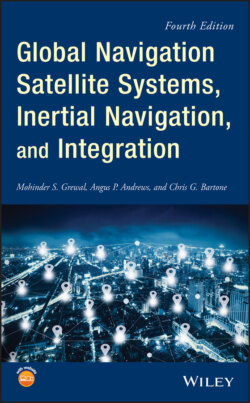Читать книгу Global Navigation Satellite Systems, Inertial Navigation, and Integration - Mohinder S. Grewal - Страница 154
3.8 Summary
Оглавление1 Inertial navigation accuracy is mostly limited by inertial sensor accuracy.
2 The accuracy requirements for inertial sensors cannot always be met within manufacturing tolerances. Some form of calibration is usually required for compensating the residual errors.
3 INS accuracy degrades over time, and the most accurate systems generally have shortest mission times. For example, ICBMs only need their inertial systems for a few minutes.
4 Performance of inertial systems is commonly specified in terms of CEP rate.
5 Accelerometers cannot measure gravitational acceleration.
6 Both inertial and satellite navigation require accurate models of the Earth's gravitational field.
7 Both navigation modes also require an accurate model of the shape of the Earth.
8 The first successful navigation systems were gimbaled, in part because the computer technology required for strapdown implementations was decades away. That has not been a problem for about four decades.
9 Gimbaled systems tend to be more accurate and more expensive than strapdown systems.
10 The more reliable attitude implementations for strapdown systems use quaternions to represent attitude.
11 Systems traditionally go through a testing and evaluation process to verify performance.
12 Before testing and evaluation of an INS, its expected performance is commonly evaluated using the analytical models of Chapter 11.
